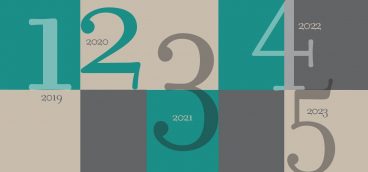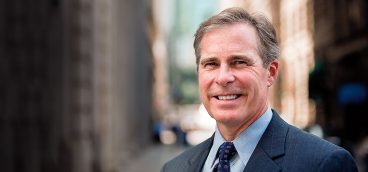Edinboro, By Any Other Name

After graduating from South High in 1956, I spent the next five years in Pittsburgh drifting through mind-numbing jobs in gas stations, factories, and warehouses, until I finally ended up working as a stock boy in Gimbels Downtown department store. The only distraction from my misery was playing softball, touch football, basketball, and volleyball at Ormsby recreation center on the South Side.
In the fall of 1960, while Pittsburgh was celebrating the Pirates dramatic World Series win over the Yankees, I decide to do something about my far-from-dramatic life. I was playing basketball for Gimbels in an industrial league and competing against former college athletes. I thought I was good enough to play college ball, but maybe for a small school with a bad team.
When Edinboro State College finished with one of the worst basketball records among western Pennsylvania’s state colleges, I applied to the school and to my amazement was accepted for the 1961-1962 academic year . In September, a little more than five years after I graduated from high school, I left Pittsburgh for the first time in my life to attend college in a small town in northwestern Pennsylvania, about 100 miles north of Pittsburgh and 20 miles south of Lake Erie.
Located in the valley of the Conneauttee, an Indian name for “snowplace,” Edinboro, founded in the late 18th century by a native of Edinburgh, Scotland, was usually buried, from late fall until early spring, with lake-effect snow cascading down from Lake Erie. But, with its small lake and lakeside cottages, it had become a modest resort town in the summer for working and middle-class families, trying to escape Pittsburgh’s smoke and soot. They often decided to send their children to college at Edinboro after vacationing there. The students were often the first generation in their families to attend college.
The town of Edinboro mostly consisted of two L-shaped blocks, highlighted at its juncture by a post-office and a combination convenient store/gas station. There was one movie house, aptly called the Best because it was the only show in town, and two diners, the Crossroads, famous for its pecan pie, and Liz’s, where students, seeking comfort food, could order a hot meatloaf sandwich smothered in gravy. On weekends, after dancing at the Student Union, college couples could head for the Driftwood and its jukebox, while older students drank pitchers of beer at Troy’s and Teray’s, though the latter was more of a hangout for locals.
In the fall of 1961, I was one of around 1,600 students who lived on or around Edinboro’s campus. Females were housed in several dorms, including a dilapidated barrack, euphemistically called East Hall. Males, with the exception of the freshmen who were assigned to the newly constructed Centennial Hall, lived in lakeside cottages that were off limits to females, though, with only one policeman in town, affectionately called “Snowball,” that didn’t stop couples from ending up at a darkened lakeside on weekends.
Edinboro was a part of a Pennsylvania system of 14 state colleges ranging from California and Edinboro in the west to Cheney and Mansfield in the east. The declared mission of the system was to educate and train students to become elementary and high school teachers. While Edinboro had just changed its name from Edinboro State Teachers College to Edinboro State College, its mission, to train teachers, remained essentially the same.
My reason for heading to Edinboro was to play basketball, but, besides adjusting to small town life and living in a dorm, I also had to declare a major field of study. Edinboro was known for its arts program, but doodling my way through high school had hardly prepared me for the arts. Desperate for a major at a college that had no physical education program for its athletes, I remembered bluffing my way through book report assignments in high school by reading Classics Illustrated. So, without realizing that I was about to make one of the most important decisions in my life, I became an English major.
At the time, Edinboro’s curriculum, besides courses in our major, included required courses in basic studies, and what we mockingly called “educationese.” The basic studies courses ranged from composition and speech in our freshman year to current events and American government in our senior year. It also included introductory courses in the humanities, arts, and sciences.
The “educationese” courses. included the Philosophy of Education, featuring the pragmatism of John Dewey, who believed in free will, and the Psychology of Education, featuring the behaviorism of B. F. Skinner, who didn’t believe in free will. There were also General Instructional Techniques and Audio Visual Aids courses that taught us how to use the blackboard and thread film through a projector before we set out in our senior year for a semester of student teaching
Like most of the students at Edinboro, I thought the introductory and education courses were mostly busy work, but the courses in my major were a revelation. After a steady diet of comic books and the sports page, I was now reading the world’s greatest literature. During the summer after my freshman year, I was handed a reading list for a course in modern American literature that included Ernest Hemingway, F. Scott Fitzgerald, and William Faulkner. That course was the beginning of my life-long love of literature.
At a skinny 5’8”, I didn’t last that long on the basketball team, but as a student, I flourished at Edinboro. By my junior year, I was a Dean’s List student and the editor of our student paper, The Spectator. By the early 1960s, the Vietnam War was beginning to have an impact on colleges around the country, but our major campaign at The Spectator was to convince Edinboro, whose sports teams were the Red Raiders, to embrace its Scottish heritage. Today’s sports teams at Edinboro are the Fighting Scots.
It’s been a little more than 55 years since I graduated from Edinboro and, that summer, married my college sweetheart, Anita (Homich), an elementary major from Coraopolis. Our 1965 graduating class joined generations of Edinboro alumni who, over the years, had gone on to teaching careers in elementary and high schools, many of those schools located in the Pittsburgh area.
Anita taught for a few years, while I attended graduate school. After completing my PhD, I took a teaching position in the English Department at Southern Illinois University. Once our children grew up and went off to college, Anita returned to teaching. By the time we retired, Anita and I had taught over 1,000 students ranging from first graders to graduate students.
Over the years, Anita and I would visit Edinboro and wonder at the rapid expansion of what had become Edinboro University. We drove along what had been a back road that students used as a lovers lane, but now was a main campus road that ran pass a new sports arena, football stadium and library, as well as new academic buildings named after our former professors. It was all very impressive, but it was no longer our Edinboro.
I spent 32 years as an English professor, including nine years as a department chair, so I’m well aware of the roller-coaster ride of American universities through periods of enrollment surges and rapid expansion, followed by dramatic drops in enrollment and loss of financial support. For the past few decades, American universities, including Edinboro, have experienced such a persistent drop in enrollment and financial support that many desperate leaders in higher education feel that there is no bottom, no end, to the decline unless they take drastic action.
To deal with this worsening situation, the Pennsylvania System of Higher Education has decided to collapse some of its universities, beginning with California, Clarion, and Edinboro in the west into a hyper university, called the Pennsylvania Western University, or Penn West. Those of us who graduated from Edinboro have been receiving emails from our alma mater reassuring us that Edinboro, despite becoming part of a university conglomerate, will “preserve” its “Fighting Scots” tradition.
It’s small comfort that Edinboro will retain its “Fighting Scot” tradition. As an Edinboro graduate and retired teacher, I’m much more concern about the school’s far more important tradition of preparing students for teaching careers. I can only hope that Edinboro, once a state teachers college, will, by any other name, not lose sight of its original mission.













